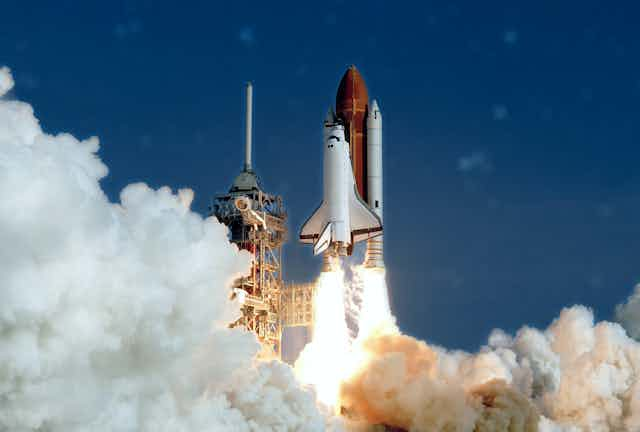Only six countries in Asia, including India and China, can launch satellites into orbit.
However, Indonesia may soon follow in India and China’s footsteps after the National Institute of Aeronautics and Space (LAPAN) this month announced a plan to build a spaceport in Biak, an island in the northern part of Papua.
Slated for operations in 2024, it will be the first spaceport in Indonesia. It is also set to become the only non-military spaceport in the Pacific located near the equator.
There are other two equatorial spaceports. Europe’s Guiana Space Centre in French Guiana is about 5 degrees above the equator, and Brazil’s Alcantara Space Centre about 2 degrees below it. Both are in South America.
Equatorial spaceports are ideal for launching low-orbit satellites – those that orbit at an altitude of 2,000km or less.
These satellites are good for data transmissions as they have lower latency. They can also be used for communication and weather research.
The first equatorial port in the Pacific
Once operational, the Biak spaceport would be the first non-military equatorial spaceport serving the Pacific region, and the closest one to the equator at only 1 degree below.
Besides Biak, other locations that were considered are Morotai Island in Northern Maluku and Enggano Island in Bengkulu, a province in southwestern Sumatra.
However, Biak was chosen primarily because it is the closest to the equator.
“For low-orbit equatorial satellites such as for communications and meteorology, it would be much cheaper to launch it from the equator,” Indonesia’s National Institute of Aeronautics and Space director Thomas Djamaluddin told The Conversation recently.
He said satellite launches depend on the intended orbital inclination from the equator. It is cheaper to launch from the equator as no manoeuvres are required to adjust its orbit after entering space.
“Launches from the equator are still very rare, there are only in Guiana and Alcantara, but none so far in the Pacific region. This is an opportunity for the Biak spaceport,” Djamal said.
New port, new possibilities
Djamal says the Biak spaceport will also offer better facilities than the institute’s current facility in Garut, West Java.
The Garut launch site is limited to experimental projects. It can only launch the space institute’s experimental RX rockets with a maximum diameter of 450mm, like the RX-450.
Launching any rockets larger than 450mm would pose a risk to the dense residential area around the launch site, Djamal explained.
The Biak spaceport can accommodate bigger rockets, like the RX-550, and also multistage rockets capable of launching satellites into low-earth orbits.
To date, Indonesia launches its satellites from overseas facilities.
It used the Kennedy Space Centre in the US to launch its first communication satellite, Palapa, in 1976. The institute’s last three micro satellites were launched from India’s Satish Dhawan Space Centre in 2007, 2015 and 2016.
The Biak spaceport will hopefully change that.
When asked why it took so long for Indonesia to build its first spaceport, Djamal cited financial reasons.
However, he was not able to estimate the funding required as the spaceport plan is still in its very early stages.
“Should an expensive facility like this be built while our launch activities and frequency are still limited, it definitely wouldn’t make sense,” he said.
China, in comparison, was the nation with the most orbital launches in 2018 with 38 launches. Last year, Indonesia only launched some experimental rockets, and none carried a satellite.
Reaching out to international partners
Premana Premadi, an astronomer at Institut Teknologi Bandung in West Java, is optimistic about the prospects of this spaceport. However, she warns it should be accompanied by major investments to improve human resources.
“To support the spaceport, I think we have to immensely invest in our scientists and space technology specialists, as it would make technology transfer from modern nations much faster,” she said.
She also suggested Indonesia collaborate with international space consortiums, including parties such as other space agencies, international organisations and multinational space companies, to operate the Biak facility.
“We have to start from now. Entering partnerships with consortiums will help with the development of infrastructure and technology, improve human resources and also ensure a solid customer network,” she explained.
Djamal agrees that international collaboration is key to making the Biak facility a successful spaceport.
“The spaceport wouldn’t be efficient if only used for our own activities, which is currently still not a lot,” he said.
“International partnerships are needed for its operation. With customers from various countries, we hope that the Biak spaceport can be an active go-to launch site in the equatorial Pacific.”
What’s next?
Djamal also hopes the spaceport can boost Indonesia’s space activities.
Indonesia’s 2013 Space Law specifies the use of outer space for national interests through five main activities: space research, remote sensing, space technology development, launches, and commercial space activities.
Due to the lack of a proper spaceport, only the first three activities have been done.
“We’re hoping to start venturing into launches and commercial activities little by little. That’s why we’re currently searching for prospective national and international partners,” Djamal said.


